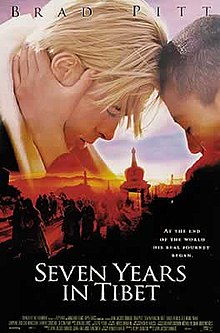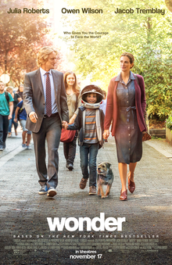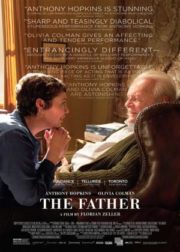
Submit your review | |
Seven Years in Tibet, directed by Jean-Jacques Annaud and released in 1997, is a captivating and visually stunning film that tells the true story of Austrian mountaineer Heinrich Harrer's transformative experiences in Tibet. Through its breathtaking cinematography, heartfelt performances, and exploration of cultural differences, the film offers a poignant and thought-provoking journey of self-discovery and human connection.
The film follows Heinrich Harrer (Brad Pitt), an arrogant and ambitious mountaineer, as he embarks on an expedition to climb Nanga Parbat, one of the world's highest peaks. However, his plans are disrupted by the outbreak of World War II, and Harrer finds himself captured and interned in a British prisoner-of-war camp in India. Eventually escaping, he ventures into the remote and mysterious land of Tibet, where he encounters the young Dalai Lama and begins a profound and transformative friendship.
Brad Pitt delivers a compelling performance as Heinrich Harrer, capturing the character's initial arrogance and later growth with nuance and depth. Pitt's portrayal effectively conveys the emotional and spiritual journey that Harrer undergoes throughout his time in Tibet. The young actor playing the Dalai Lama, played by Jamyang Jamtsho Wangchuk, also delivers a remarkable performance, exuding wisdom and innocence beyond his years.
One of the film's standout aspects is its breathtaking cinematography, which beautifully captures the stunning landscapes of the Himalayas and the grandeur of Tibetan culture. The visuals are awe-inspiring, transporting viewers to the vast and majestic landscapes that serve as the backdrop for the story. The attention to detail in recreating the Tibetan culture and its traditions adds authenticity to the film, enhancing its immersive qualities.
Seven Years in Tibet skillfully explores the clash between Western and Eastern cultures, highlighting the stark differences and the opportunities for growth and understanding that arise from such encounters. The film delves into the spiritual and philosophical teachings of Tibetan Buddhism, offering a window into the wisdom and compassion that shape the Dalai Lama's worldview. The exploration of cultural differences is handled with sensitivity and respect, allowing viewers to reflect on their own perspectives and broaden their understanding of different ways of life.
The film's narrative unfolds at a deliberate pace, allowing the audience to immerse themselves in the world of Tibet and witness the gradual transformation of the protagonist. However, some viewers may find the pacing slow at times, particularly in the first half of the film. Nevertheless, the film's contemplative tone and emphasis on character development contribute to its overall impact.
In summary, Seven Years in Tibet is a captivating and visually stunning film that offers a poignant exploration of cultural differences, personal growth, and the power of human connection. With its breathtaking cinematography, heartfelt performances, and thought-provoking themes, the film transports viewers to the mystical world of Tibet and provides a deeply resonant journey of self-discovery and enlightenment. While the deliberate pacing may not appeal to all viewers, Seven Years in Tibet stands as a remarkable and emotionally affecting cinematic experience.
This movie is based on one man’s spiritual journey through the mountains of Tibet as it is occupied by Chinese communist in the 50s.
This is absolutely an epic film to me. The emotional honesty is obvious to see and for those who have studied history, it is easy to agree that it is historically accurate.
The well managed making of this movie makes it easy for you to spend your 140 minutes watching it and still want to do it again immediately if you have time.
There are several positive lessons that this movie offer, most especially the lessons of Dalai Lama which convinces Heinrich Harrer to not escape fatherhood.
You may notice that Brad Pitt’s German accent is a little inconsistent, but he is still breath taking in his role as the leading character.
























